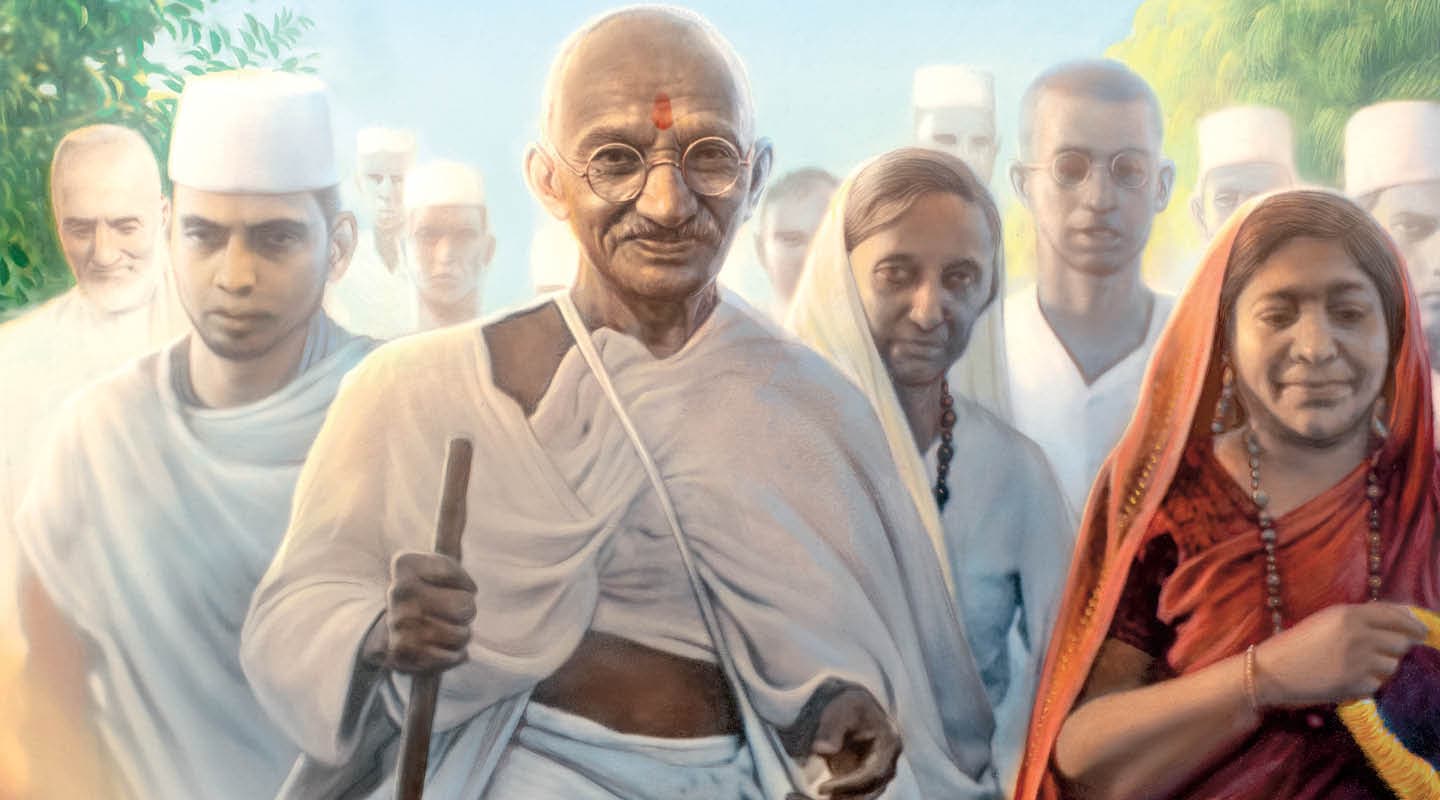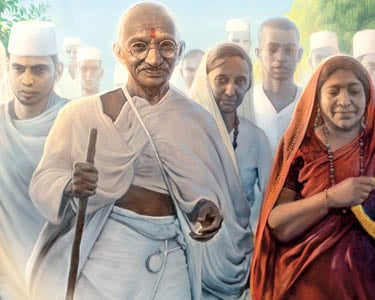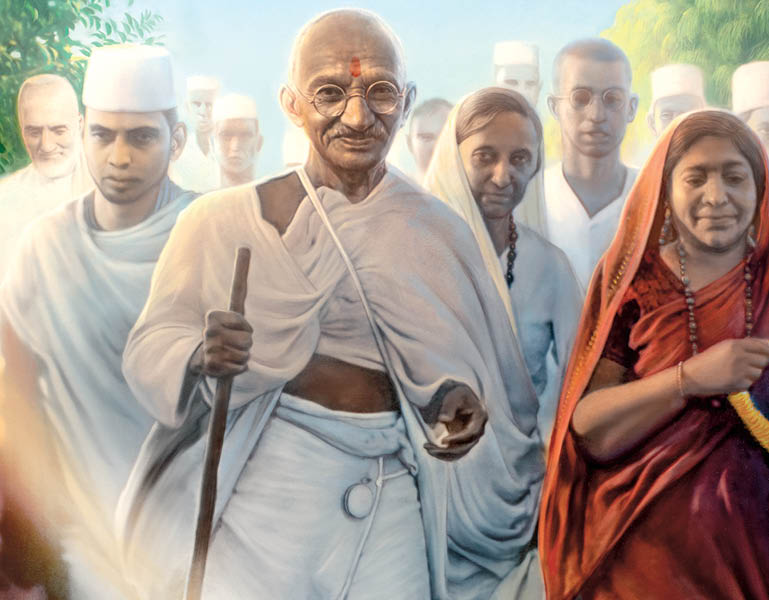He was a frail man who wore glasses and a traditional Hindu loincloth called a dhoti, walked with a bamboo staff, and had a toothless grin. He looked like a simple Hindu holy man. But armed only with great courage and a strong commitment to nonviolent resistance, Mohandas Gandhi took on one of the world’s mightiest empires.
For nearly 30 years, Gandhi led the movement that eventually forced Britain to grant independence to India, its most prized colony, in 1947. The subcontinent was partitioned, or divided, into two nations: India and Pakistan.
In October, celebrations will ring out across India in honor of the 150th birthday of Gandhi, known as the “Father of the Nation.” Today India is the world’s largest democracy, and it has the fifth largest economy in the world, according to the International Monetary Fund. However, tensions have recently risen between the nation’s Hindu majority and its Muslim minority, as well as between India and Pakistan. And many experts believe the region is moving away from the ideals for which Gandhi fought.
Yet Gandhi is still revered worldwide, not only for helping liberate the Indian subcontinent from British imperialism, but for his nonviolent protests, which inspired many other civil rights movements, including the one led by Martin Luther King Jr. in the United States (see “Gandhi & MLK,” below).
Gandhi envisioned a world “of neighborliness and openness to strangers,” says Gyan Prakash, a history professor at Princeton University and the author of numerous books on India. “The message Gandhi stood for was that public service or politics was not just about power, but about something larger.”
He was a frail man. He wore glasses and a traditional Hindu loincloth called a dhoti. He walked with a bamboo staff and had a toothless grin. He looked like a simple Hindu holy man. But this man, Mohandas Gandhi, had great courage and a strong commitment to nonviolent resistance. With only those two things, he took on one of the world’s mightiest empires.
For nearly 30 years, Gandhi led the movement that eventually forced Britain to grant independence to India, its most prized colony, in 1947. The subcontinent was partitioned, or divided, into two nations: India and Pakistan.
In India, Gandhi is known as the “Father of the Nation.” This October, celebrations will ring out across the country in honor of his 150th birthday. Today India is the world’s largest democracy. It has the fifth largest economy in the world, according to the International Monetary Fund. But tensions have recently risen between the nation’s Hindu majority and its Muslim minority. There’s also a rift growing between India and Pakistan. And many experts believe the region is moving away from the ideals for which Gandhi fought.
Yet Gandhi is still revered worldwide. He’s remembered for helping liberate the Indian subcontinent from British imperialism. And he’s still honored for his nonviolent protests. They inspired many other civil rights movements, including the one led by Martin Luther King Jr. in the United States (see “Gandhi & MLK,” below).
Gandhi envisioned a world “of neighborliness and openness to strangers,” says Gyan Prakash, a history professor at Princeton University and the author of numerous books on India. “The message Gandhi stood for was that public service or politics was not just about power, but about something larger.”



